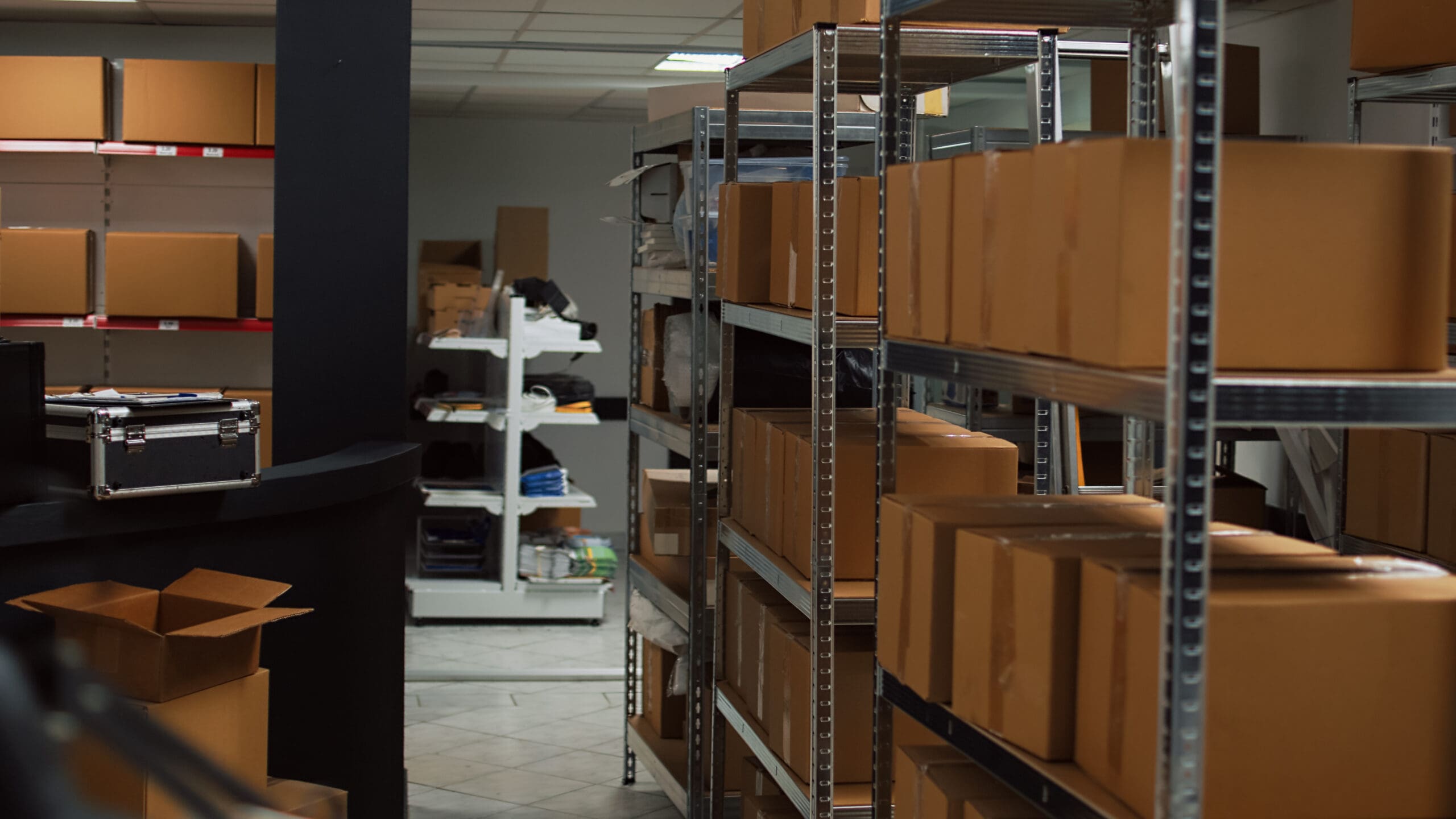Inventory financing is needed by most businesses in order to ensure they have plenty of products to sell. With products going in and out, cash flow can be challenging. To overcome cash flow challenges and maintain a healthy supply of inventory, financing may be the answer you are searching for. Inventory financing can offer several advantages and disadvantages too. If you have researched inventory financing you may have found that it can be quite expensive. For affordable inventory financing solutions, keep reading to discover some of the best inventory financing companies..
What is inventory financing?
In the most basic terms, inventory financing is a loan against some or all of your inventory currently in stock. A lender may evaluate your inventory and then make a loan offer for a certain percentage of the value of your inventory. When you do this type of financing, essentially you are using the inventory as collateral to secure the loan. If for any reason you go into default on the loan, the lender then can seize some or all of your inventory in an attempt to collect on the debt. Ultimately, you may be able to use the funds to pay for any number of business expenses, however, most businesses tend to use the financing to purchase additional inventory. Or, some business owners realize that most of their capital is tied up into inventory, so in order to create some cash flow to cover day-to-day expenses, taking a loan against that inventory is a great way to add some working capital to the ledger. As you sell off your existing inventory, you then pay back the loan to the lender plus interest.
Additionally, if a business needs to stock up on additional product before a busy season like the holiday shopping season, or if their product is more popular during a certain time of the year, like an inflatable kayak that sells extremely well before the summer vacation season, then they can leverage their existing inventory to create the capital needed to fund the manufacturing of new inventory. The business then will make sure that they have enough inventory on-hand to cover the increase in demand during that time of the year. As they sell the new and old inventory, the business then will have more than enough revenue to pay off the loan. Examples of these types of businesses include retail stores and wholesalers who require enormous amounts of inventory in stock to meet the demands of their customers, whether that be retail customers or other retail businesses.
What are the top options when it comes to inventory financing?
Inventory financing may be one of the most powerful tools for any business that deals in large quantities of product. It can be hard to see your cash reserves depleted as you make large purchases of inventory to meet holiday demand or to be a properly supplied wholesaler that is able to keep all of their retailers fully stocked. However, it may be the nature of how your business operates. That is why inventory financing is so important to fill that cash reserve void as you have all your value tied up into inventory. There are many different types of inventory financing. Some may work better than others when it comes to the structure and specifics of your business. Here is a quick breakdown of some of the inventory financing options that you may want to consider for your next loan.
- Inventory Loan: An inventory loan is the most basic type of inventory financing. A lender evaluates the value of your inventory and lets you use that value as collateral to secure a loan. You then can simply pay back the loan amount in installments, or you can agree to pay back the loan following the sale of the inventory. If you default on the loan, you then sacrifice the inventory to the lender who will then sell it in an attempt to collect on the debt. Typically, once the loan has been repaid and the inventory has been sold, you may need to take out another loan to pay for another batch of product. Ultimately, the only thing you are out on is the interest that you pay to the lender. That interest can be calculated directly into your profit margins, allowing you to set prices that are competitive, that make your business a profit, and that cover the interest on your inventory financing.
- Inventory line of credit: An inventory line of credit is a revolving line of credit that you can borrow against at any time. Once you enter into a funding partnership with a lender, the lender will allow you to borrow as much money as you need up to a debt ceiling. You continuously make payments and take loans out from the pool of money that the lender has appropriate to your inventory line of credit.
- Working capital loan: Working capital loans are designed to give businesses enough cash on hand to cover everyday expenses during periods of time when revenue may be lower. This is ideal for seasonal businesses that see a bulk of their revenue generated in only a few months of the year. When a business owner takes out a working capital loan, most often they are borrowing against their personal credit.
- Cash advances: If you operate a retail location and you accept credit cards, you may be able to qualify for a merchant cash advance which borrows against a certain percentage of your future credit card sales. You and your business are given an upfront lump sum of money, and in exchange, the lender gets access to a certain percentage of every credit card sale going forward. Usually paid out bi-weekly or monthly.
- Kickfurther: Kickfurther is the world’s first online inventory financing platform that enables companies to access funds that they are unable to acquire through traditional sources. We connect brands to a community of eager buyers who help fund the inventory on consignment and give brands the flexibility to pay that back as they receive cash from their sales. This alleviates the cash-flow pinch that lenders can cause without customized repayment schedules, allowing your brand to scale quickly without impeding your ability to maintain inventory or financial flexibility.
Which option is best for financing your inventory?
There really is not one best type of inventory financing. The best type of inventory financing is the one that works best and makes the most sense for your business. Are you a seasonal business? Do you have times of the year where you need large quantities of inventory on hand, and then other times you do not. It may be in your best interest to research each type of inventory financing thoroughly before making a commitment to one type of inventory financing over another.
How do I qualify for inventory financing?
Inventory financing can be a bit more complicated than other types of business financing. The reason being is that you are essentially using your inventory on hand as collateral to secure a loan from a lender. The lender wants to be sure that you are doing everything you can to accurately report the contents of your inventory, and to protect that inventory. Here are some requirements that a lender may ask of a small business looking for inventory financing.
- A well-managed inventory: A lender will want to see that you have a trusted inventory management system that allows you to keep constant and up-to-date information on quantities, sales, returns, and basically any piece of information that has to do with the movement of inventory through your business. They may also require that you complete a full-audit before applying for the loan. Often an internal audit may not suffice. You may have to pay upfront for the services of a 3rd party auditing service.
- Protected inventory: If your inventory has a short shelf life, then getting inventory financing may prove more difficult. However, if your inventory can sit on shelves for a long time without issue, then lenders will be more happy to lend you money using your inventory as collateral as long as they see you have taken steps to protect the inventory from potential damage.
- Open door policy: If you are acquiring inventory financing you should always be prepared for a lender to show up unannounced for a surprise visit to ensure you are doing your best to protect the inventory.
- Accurate records: Lenders want to see a business that is doing well and that is selling their product. In order to demonstrate a certain level of sales, a business should have accurate sales records.
If you are looking to qualify for inventory financing, at a minimum, you should expect the above mentioned requirements from most lenders. Some lenders may actually have additional or more strict requirements for you to meet in order to receive financing.
How Kickfurther can help
Most small businesses need some type of inventory financing, regardless of how established they are. Inventory financing often sounds like an easy answer for stocking products but it can be costly. After searching hopelessly for affordable inventory financing, Kickfurther was founded by an entrepreneur just like yourself. Compared to other financing options, Kickfurther is up to 30% cheaper and allows business owners to pay back loans as inventory sells.
Searching for affordable inventory financing? Visit Kickfurther today!









